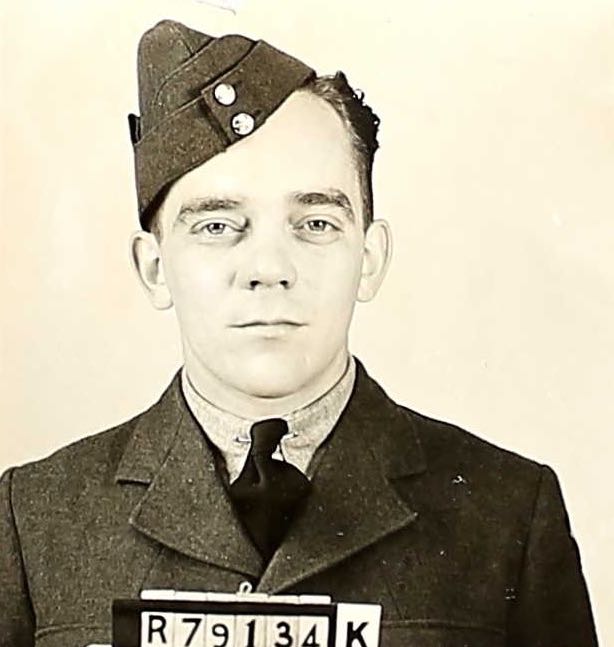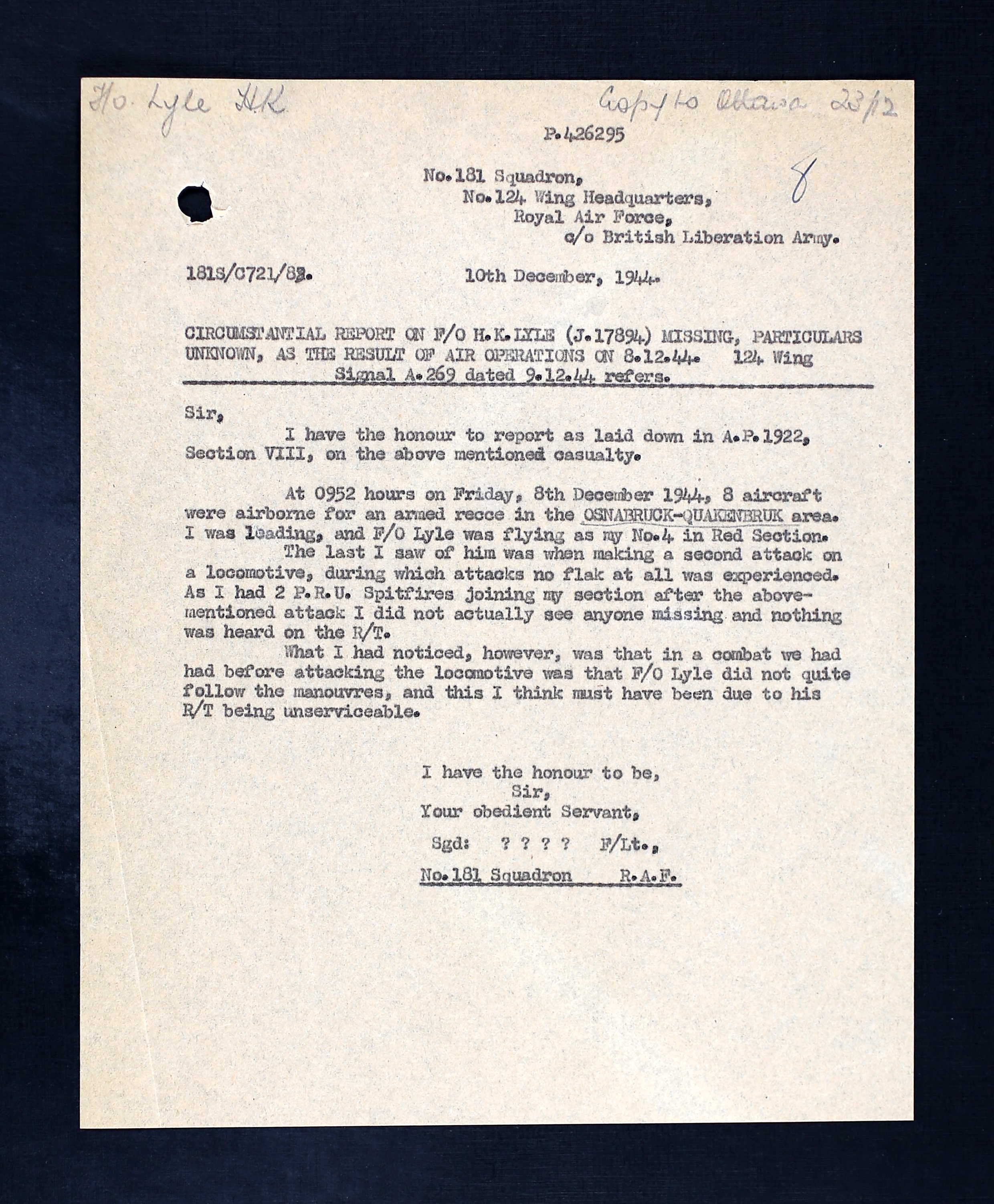

October 18, 1917 - December 8, 1944


Horace Keith Lyle, born in Kelliher, Saskatchewan, was the son of Hugh Henry (salesman) and Mildred Craig (nee McLaughlin) Lyle of Montreal, Quebec. He had one brother, Murray Douglas Lyle, 15, and three sisters, Mildred Kelliher Parnell, 34, Dorothy Gladys Munn, 26 and Vivian Marguerite Lyle, 23. A sister and brother died in childhood.
Lyle was a stereotyper at Monitor Publishing Co., Montreal, before enlisting. He listed being a mechanic, weigher and bridge builder in Saskatchewan and Ontario prior.
He listed hockey, baseball and tennis, plus riding as sports he enjoyed. His hobby was gas engines. In January 1941, he was assessed as "sincere type, impresses me as conscientious and diligent, and that he would make good pilot training material." He was 5' 5 1/2" tall and weighed 148 pounds. He had hazel eyes and brown hair.
He started his journey through the BCATP in Toronto in early 1941, then went to No. 3 ITS in Victoriaville, Quebec in May [Is a reliable, smart looking man. Definite in ideas about service. Makes friends easily. Working steadily. Appears dependable and will make very good Air Force material.]. He was at No. 15 EFTS Regina in July [A careful pilot. Excels in instrument flying; below average ability in carrying out aerobatic manoeuvers. Quick mind and good attitude at Ground Training], then at No. 11 SFTS, Yorkton in August 1941. [Average pilot not too strong on practical navigation. Slow, slightly below average ability but is serious and hard working. Can think for himself.] He received his Pilot's Flying Badge on November 7, 1941.
He was sent overseas to RAF Trainee's Pool December 7, 1941.
He was in Egypt from January 7, 1942 until March 8, 1942.
He was with 412 Squadron by May 1943, then with 286 Squadron two weeks later. He remained with this squadron until July 1944 when he was sent to 55 OTU, then in September to No. 3 TEU, then to 83 GSU, then to 181 Squadron by October 3, 1944.
At No. 55 OTU: "An average pilot. Quiet steady type." At No. 5 AFU: "Trained in the USA. A pilot of average ability. Navigation quite good -- both courses and map reading. Instrument flying satisfactory. Formation flying -- steady although rather wide. Nigh flying: tends to hold off a little high but went solo satisfactory. A keen NCO who has set a good standard of discipline."
On December 8, 1944 at 0952 hours, eight aircraft were airborne for an armed recce in the Osnabruck-Quakenbruk area. F/O Lyle was flying as No. 4 in Red Secton. He made a second attack on a locomotive, during which attacks no flak was experienced. Two PRU Spitfires joined the Section after the attack. The F/L who reported Lyle missing did not hear anything on the R/T. He felt that F/O Lyle did not quite follow the manouvres and this was due to his R/T being unserviceable.
On December 9, 1944, S/L W. B. Short of 181 Squadron wrote a letter to Mrs. Lyle to tell her what happened to 'Keith' Lyle. "I am afraid no one actually knows what happened to Keith, and there is a fair chance that he may have made a forced landing in enemy territory...Keith was a very popular and efficient member of the Squadron....Should we hear any news, we shall notify you immediately. Hoping for better news."
Copies of Luftwaffe reports showed that at 1200 hours on December 8, 1944, a single engined fighter was shot down by a German fighter, presumably from Hesepe airfield, and crashed 3 kms east of Voerden on Kalkrieser moor. It was an isolated location with no one living nearby. The Luftwaffe report stated that the pilot of the a/c sank with it in the swamp. It was impossible to approach the area because of the bog in December 1948.
In June 1949, the No. 4 Missing Research and Enquiry Unit wrote a memo: "From the markings on the wreckage given in your report, Aeronautical Inspection Directorate have been successful in identifying this aircraft as 'Typhoon' Serial No. MN888, lost on December 8, 1944. The pilot of the aircraft was J17894, F/O H. K. Lyle, as his body has not so far been accounted for, it is most probably still buried with the aircraft. Will you please arrange salvage operations if possible and endeavour to recover his remains." The fuselage was at a depth of 12 feet.Being able to recover identity discs, part of a blue battledress tunic, a blue woollen sweater and the sole of a boot, plus Lyle's wallet, containing money and photos, plus Pay Book, Lyle was identified June 30, 1949, four and a half years after his fatal crash. His remains were buried in the Sage War Cemetery, near Oldenburg, west of Bremen.
In early 1950, Mrs. Lyle asked if the recovery team found a diamond ring. They had not.
LINKS: